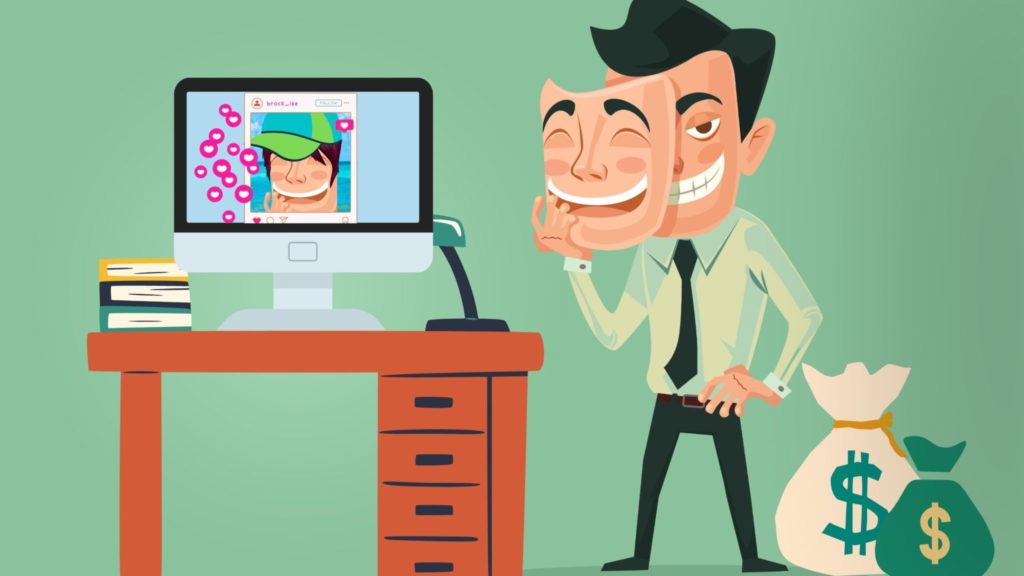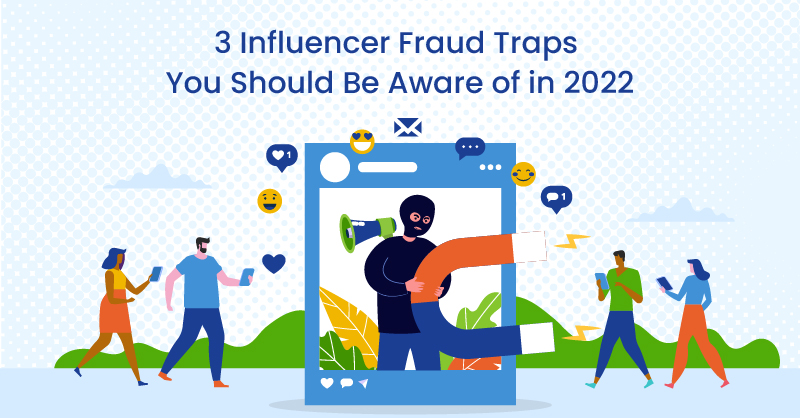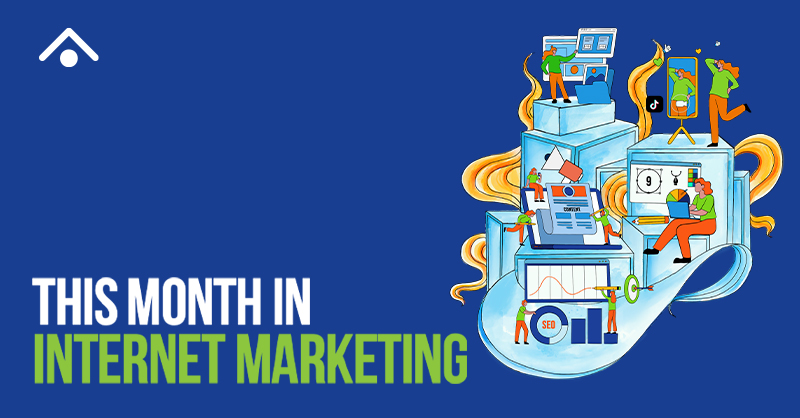Fraudulent activities by social media influencers are on the rise. From bots to fake profiles and false claims, things aren’t getting any better.
So how can you protect yourself from being scammed by an influencer?
Read this article to find out how to spot an influencer scam before it ruins your business. Plus, learn about the latest trends in influencer fraud so you can stay ahead of the curve.
What Is Influencer Fraud, and Why Should You Be Aware of It?
There are a few different types of influencer fraud, but some of the most common include:
- Fake followers: Some scammers will buy fake social media followers to make it appear like they have a large and engaged following.
- Fake reviews: Another common type of influencer fraud is when scammers post bogus reviews for products or services. These reviews are often positive and can be challenging to spot if you’re not looking for them.
- Affiliate links: Some scammers will use affiliate links to earn commission on sales of products or services they promote. However, these products or services may not be legitimate, and the influencer may not disclose they are being paid to promote them.
Why should you be aware of all that?
Simply put, being associated with fraudulent products or people can create a significant PR crisis that would require lots of time and resources to overcome.
Alternatively, a fake influencer can steal your money and products without delivering the promised results. In that case, you’d have to go through the process of finding a new content creator, using more time and resources.
The Three Most Common Types of Influencer Fraud
There are three main types of influencer fraud: fake followers, taking your money without delivering results and posing as an influencer to break the law. Let’s take a closer look at each one.
1. Influencers Artificially Inflating Their Follower Numbers
In this case, an influencer buys fake social media accounts to inflate their follower numbers artificially. Certain influencers may create bot accounts, which are fake accounts controlled by a computer program.
The bot account can like, comment, and follow other accounts on behalf of the influencer. Therefore, the influencer appears to have a higher engagement rate than they actually do.
As a result, they look more popular and influential than in reality.
Pods are another way in which influencers deceive you regarding their engagement.
Pods are groups of influencers that have created a tight-knit community, bumping each other’s posts.
For example, an influencer in a 100-people pod may see their post reach the Explore page on Instagram because all 100 members of the group liked and commented on it.
Potential sponsors and brands are duped into believing that the influencer has a much larger and more engaged following. Unfortunately, they only realize their error when they don’t see the expected results.
However, social channels like Facebook try to find and ban these groups.
2. Taking Your Cash/Products and Not Delivering Results
In this case, an influencer may promise to post one sponsored Instagram story for every $100 you give them. But once you pay them, they never publish the story.
Or, an influencer may agree to review your product on their YouTube channel. But instead of an honest review, they post a short, positive video that doesn’t give any real information about the product.
This fraud is often hard to spot before you do business with them, so anyone can fall into this trap.
It even happened to Snapchat.
Snapchat sued influencer Luka Sabbat, who failed to promote the agreed products (eyeglasses) according to the contract. The 20-year-old content creator was supposed to write more posts and wear the glasses during a particular event but refused to do that.

3. People Posing as Influencers to Break the Law
A scam artist might pretend they’re an influencer to put forth fake merchandise.
Influencer Logan Paul has been accused of faking his color blindness to sell some eyeglasses that supposedly cured that condition. And he ultimately admitted it.

Or, a fraudster may pretend to be a (certain kind of) influencer to get free products and services. Some even do it to gain recognition.
A Chinese content creator hailed as “Your Highness Qiao Biluo” faked her age using filters to deceive her audience.

Another Chinese influencer, Lisa Li, was exposed for living in a filthy home, although she acted as a glam content creator. And as a glam content creator, you can only imagine the luxury products she was endorsing.
And let’s not forget giveaway scams.
Fake influencers will promise to give away free products or cash if people follow their page and share the post. But of course, there is no giveaway, and people never receive anything.
Needless to say, you don’t want to connect your brand to a page like this.
How to Spot Signs of Influencer Fraud Before It’s Too Late
These types of scams can be costly and difficult to recover from. That’s why it’s essential to learn how to spot them.
Large Following and Low Engagement
The average Instagram engagement rate is 1.94%, though it can climb to 5%. This rate differs depending on the platform and type of influencer you’re using.
TikTok, for example, sees an average engagement rate of 12.43% for nano-influencers and 13.33% for micro-influencers.
If an influencer has a massive following but a much lower engagement than expected, they’ve likely purchased bot accounts or are part of a pod. You also want to look at the quality of the comments they’re receiving;
Sudden Spikes in Followers
When an influencer’s follower count suddenly skyrockets, they’ve likely bought fake followers. You can realize that, especially if this follower increase is much higher than their average growth rate.
Let’s say an influencer typically gains 500-1,000 new followers per year. If they suddenly gain 1,000 new followers on a Wednesday night, that’s a huge red flag.
Instagram Pods
It’s usually tough to understand whether an influencer is part of a pod or not because these aren’t public groups.
One tell-tale sign is seeing the same people repeatedly commenting on each other’s posts. These comments are standardized, usually containing emojis and too many exclamation points.
For example, you might see comments like “OMG!!!” or many fire and heart emojis with no real substance behind them.
Unrelated Comments
Unrelated comments sound like this:
“I just subscribed to your channel!”
“Kisses!”
These comments are often left by paid people, pod members, or bot accounts. By comparison, real comments tell a story. Real people disclose things about themselves, ask questions, and make on-point remarks about the content they’re watching.
Stock Photos
Stock photos are a red flag because influencers are afraid to show their authentic selves. That means they’re hiding something and want to create a fake image.
Why does this matter?
The advantage of working with influencers lies in their authenticity. Authenticity is what creates engagement and makes people listen to their advice.
So, sending products or money to a fake influencer means wasting both your resources and time.
Pro tip: If you’re unsure whether a photo is a stock photo or not, you can do a reverse image search on Google. Just go to Google Images and click the camera icon. Then, upload the photo in question and see if it comes up anywhere else on the internet.
Promotional Content and Almost No Valuable Content
Promotional content is a red flag because the influencer only focuses on making a quick buck. They’re not actually interested in providing value to their followers.
This content creator won’t share valuable tips, insights, or advice. All they care about is selling products.
Why should this bother you?
In the best-case scenario, their content about your brand will be low quality, and you’ll be in a poor company with the slew of other products they promoted.
In the worst-case scenario, your reputation will suffer, and your customers will avoid purchasing your products for a good while.
Too Good to Be True Offers
The “DM to collab” scheme is one of the most popular ways for scammers to get in touch with brands. They offer to promote your product or brand on their account, but all they want is free stuff.
They may even seem legitimate initially, but if you look closely, you’ll see that their account has very few followers or engagement. They’re just trying to get free stuff from you.
What to Do If You’ve Been Scammed by an Influencer
If you think an influencer has scammed you, you should first cut ties with them.
You should also report them to the social media platform you were using. For example, you can report them to Instagram’s support team if you were interacting on this channel.
Lastly, consider hiring legal representation and contacting the authorities if your contract has been breached.
5 Tips for Avoiding Influencer Fraud in the Future

The best way to avoid influencer fraud is to recognize it and use trustworthy partners. Let’s see just how you can do that.
1. Do Your Research
The best bet to avoid being scammed by an influencer is to do your research.
Before you work with any influencer, check their engagement rates and look for any red flags in their content. Look at how they interact with their followers, analyze their photos, and look them up on different channels. You can also read reviews or ask other marketers’ opinions on them.
2. Use Online Tools to Track Influencer Behavior
Online tools that track influencer behaviour include fake profile checkers, engagement rate calculators, and social media monitoring tools.
These tools will show you very low engagement rates and sudden spikes in follower numbers or likes. Some software may also show low-quality comments.
3. Partner with an Agency
An influencer marketing agency may be your best bet because they vet the influencers they work with.
They also have a team of experts who can help you choose the best influencer for your brand’s profile and goals.
4. Use Vetted Search Engines to Find Influencers
These search engines are actually massive databases of vetted influencer profiles. Some are free, while others have small fees. You can search for content creators on them using particular keywords or industry-related filters.
These engines will also show you the average engagement rate for each influencer so you can choose the right spokespeople for your brand.
5. Write up Clear Contracts and Pay the Results
Before you work with an influencer, sign a contract laying out your agreement’s terms.
This contract should include the price you’re willing to pay, what kind of content you expect, and how long the promotion will run.
Pro tip: Avoid paying your influencer before seeing results.
Use measuring tools like discount codes and UTM codes to track the results of your influencer’s promotion.
Sending your products may be tricky, too, especially if you don’t have an agreement. To avoid losing too much money:
- Vet your influencers first. An honest, reputable content creator will do justice to your products, especially if your values align.
- Don’t send your most expensive items to 1000 influencers at once. Pick and choose what you’re sending and who you send it to.
- Invite the influencer to your store to test the products.
Wrap Up
Influencer fraud is a real problem many companies deal with, especially those not used to working with content creators.
To avoid being scammed, do your research, use online tools to track influencer behaviour, and partner with an agency.
You should also write clear contracts and avoid advance pay to protect yourself if something goes wrong.
What are your thoughts on influencer fraud? Have you ever been scammed by an influencer? Let us know in the comments below!






